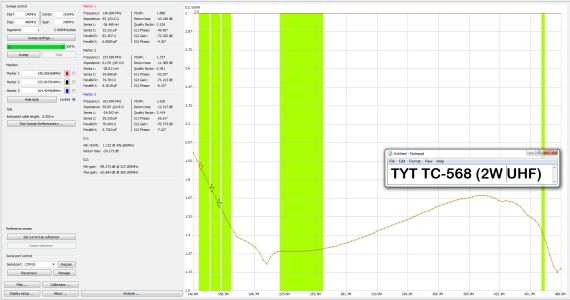Understanding SWR
SWR stands for 'Standing Wave Ratio'. When your radio transmits, it sends a waveform through your antenna. The antenna is responsible for propagating that wave into the atmosphere as efficiently as possible. When a wave is not able to get out of your radio, it means that the part that cannot get out is reflected back and this creates heat that damages the radio's circuits (called 'reflected power'). The degree of that efficiency is expressed as a ratio between the wave that is efficiently transmitted and the wave that 'stands'. We now measure the SWR of our antennas using a Vector Network Analyser, and this is expressed in many of our videos in our Youtube Channel in the 'Radios' and 'Antennas' play lists. Having a VSWR ratio that is greater than 3 is considered as undesirable. For example, we commonly find that the stock antenna that comes with most handheld radios have a VSWR that is greater than 3 at frequencies greater than 153-155 MHz. (Below: example of SWR on the TC-568 using a tuned stubby duck, click for larger version of image).

